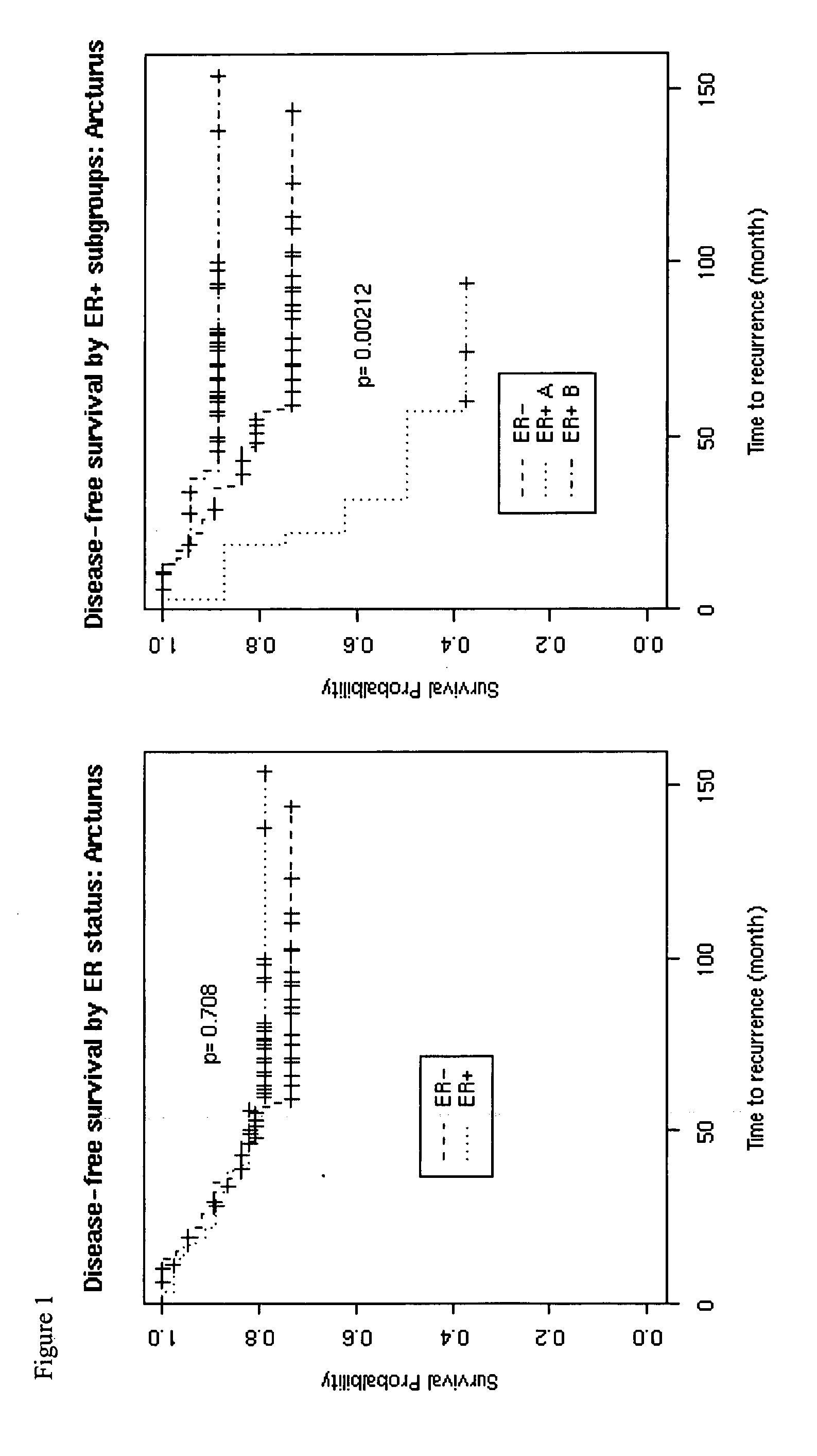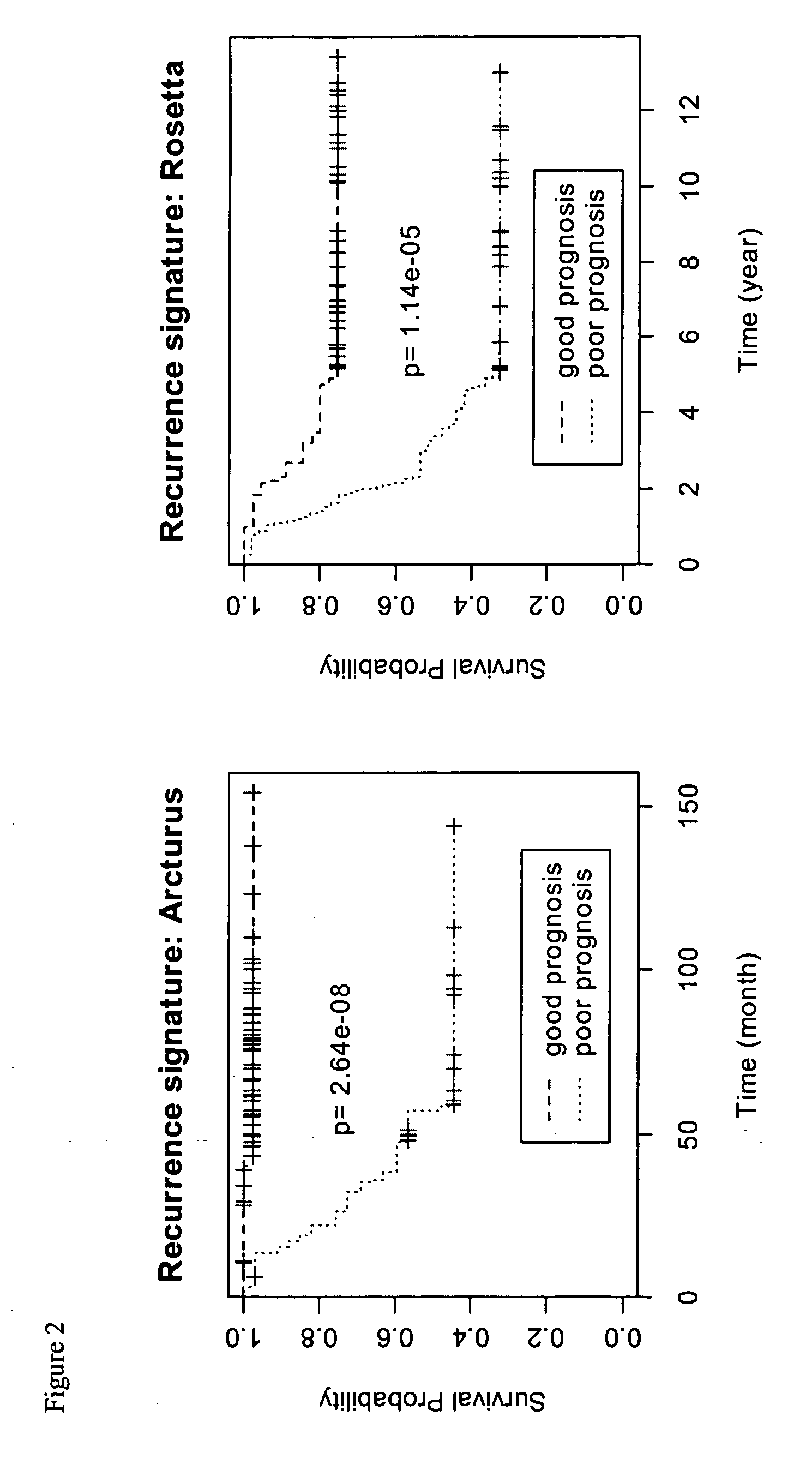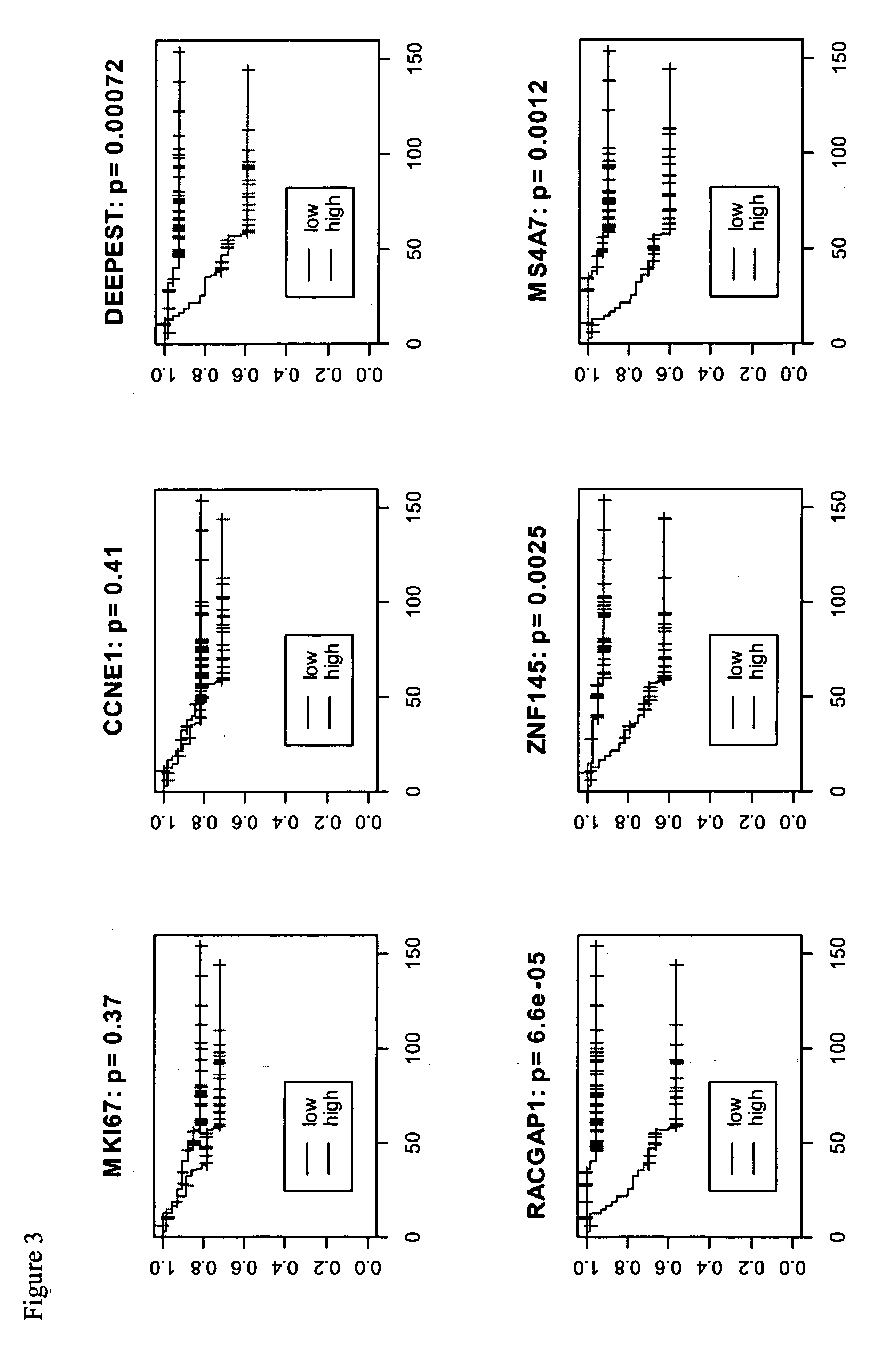Breast cancer survival and recurrence
a cancer and breast cancer technology, applied in the field of identifying and using gene expression profiles, can solve the problems of cancerous breast cancer, inclusion or exclusion of multiple genes, invasion and damage of nearby tissues and organs, etc., and achieve the effects of reducing patient survival, increasing tumor recurrence probability, and lowering expression
- Summary
- Abstract
- Description
- Claims
- Application Information
AI Technical Summary
Benefits of technology
Problems solved by technology
Method used
Image
Examples
specific embodiments
[0051] The present invention relates to the identification and use of gene expression patterns (or profiles or “signatures”) which discriminate between (or are correlated with) breast cancer survival and recurrence outcomes in a subject. Such patterns may be determined by the methods of the invention by use of a number of reference cell or tissue samples, such as those reviewed by a pathologist of ordinary skill in the pathology of breast cancer, which reflect breast cancer cells as opposed to normal or other non-cancerous cells. The outcomes experienced by the subjects from whom the samples may be correlated with expression data to identify patterns that correlate with the outcomes. Because the overall gene expression profile differs from person to person, cancer to cancer, and cancer cell to cancer cell, correlations between certain cells and genes expressed or underexpressed may be made as disclosed herein to identify genes that are capable of discriminating between breast cancer...
example i
General
[0090] Clinical specimen collection and clinicopathological parameters. Laser capture microdissected invasive cancer cells from a total of 124 breast cancer biopsies were used to discover two sets of genes, the expression levels of which correlate with clinical breast cancer outcomes. These genes could thus be used either individually or in combination as prognostic factors for breast cancer management. The characteristics of the 124 patient profiles in the study are shown in Table 1.
[0091] Relative expression levels of ˜22000 genes were measured from the invasive cancer cells for each of the 124 patients. Genes varying by at least 3-fold from the median expression level across the 124 patients in at least 10 patients were selected, resulting in 7090 genes.
[0092] In particular, 4 genes (DEEPEST, RACGAP1, ZNF145, MS4A7) were shown to be strong prognostic factors individually for predicting tumor recurrence after surgery and adjuvant therapies.
TABLE 1GroupN%Age3024.245-552...
example ii
Identification of ER Positive Subtypes with Different Survival Outcomes
[0093] Hierarchical clustering, based on the 7090 genes described in Example 1, of the resulting gene expression matrix (7090×124) revealed a cluster of 67-genes (the Ki67 set) the expressions of which differentiates estrogen receptor positive patients into two subgroups with distinct clinical outcomes based on overall survival over time.
[0094] As shown in FIG. 1, left panel, a Kaplan-Meier curve on the left compares the disease-free survival of patients based on ER status, which shows slightly better survival for ER positive patients but with an insignificant p value (log-rank test). In contrast, and as shown in the right panel, when the ER positive patients are subdivided into two subgroups (A and B) based on the expression levels of the Ki67 signature genes, which are all expressed at levels above the median to define subgroup A and below the median to define subgroup B.
[0095] The three-group (ER+, subgroup...
PUM
| Property | Measurement | Unit |
|---|---|---|
| cell morphology | aaaaa | aaaaa |
| fluorescent in situ hybridization | aaaaa | aaaaa |
| resistance | aaaaa | aaaaa |
Abstract
Description
Claims
Application Information
 Login to View More
Login to View More - R&D
- Intellectual Property
- Life Sciences
- Materials
- Tech Scout
- Unparalleled Data Quality
- Higher Quality Content
- 60% Fewer Hallucinations
Browse by: Latest US Patents, China's latest patents, Technical Efficacy Thesaurus, Application Domain, Technology Topic, Popular Technical Reports.
© 2025 PatSnap. All rights reserved.Legal|Privacy policy|Modern Slavery Act Transparency Statement|Sitemap|About US| Contact US: help@patsnap.com



